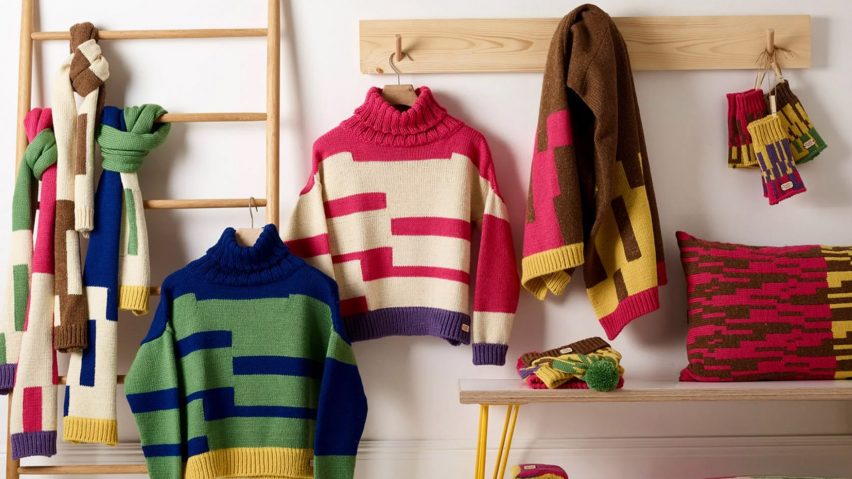
Six fashion and textile student projects that centre on their materials
Dezeen School Shows: we've picked six fashion and textile design student projects featured in Dezeen School Shows that showcase and discuss the intricacies of fabric and materials.
These fashion and textile design students have created garments that showcase the their materiality in addition to their overall design.
Projects include a collection of knitwear made from wool shorn from the student's own sheep, a garment that references the merits of mending and recycling natural materials and a series of pieces made from completely transparent material.
The selection of projects come from fashion and textile design courses at international institutions including The Design Village, University of Arts Linz, Design Institute of Australia, Bath Spa University and Lucerne School of Art and Design.
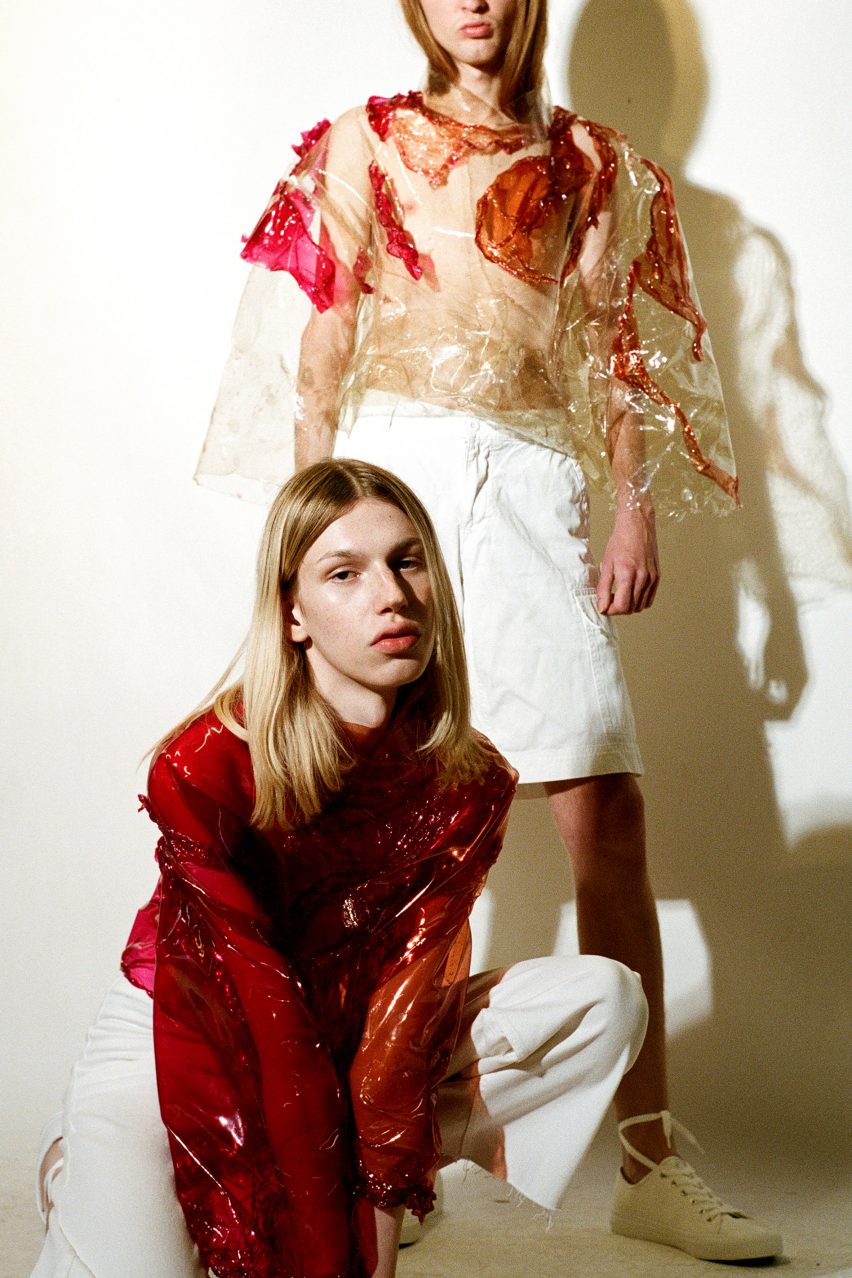
Infiltrate by Nazila Shamsizadeh
Fashion and technology student Nazila Shamsizadeh drew on an allegory by Greek philosopher Plato for their collection named Infiltrate. The garments in the collection were made from both clear and coloured transparent materials, allowing the wearers body to be seen through them.
"In Plato's allegory of the cave, it says, 'to them, I said, the truth would be literally nothing but the shadows of the images'," said Shamsizadeh. "By creating biomaterials and 3D simulations, the transition between 2D, 3D and 4D spaces can be explored."
"The materials and their virtual simulation react to the surrounding conditions and demonstrate that the way we look at things plays a big role in their definition."
Student: Nazila Shamsizadeh
School: University of Art and Design Linz
Course: BA (Hons) Fashion and Technology

During her time studying fashion design, student Anshika Sood created a neutral-coloured tee shirt designed to symbolise the wastefulness of the fashion industry.
The item was presented beside a receipt that breaks down the true cost of the fashion industry, and is adorned with labels that expose the socio-environmental toll of clothing production – including the manufacturing process and treatment of people who make garments.
"As a part of the experiment, she wove a portion of a shirt to show the zoomed-in warps and wefts of the fabric, which formed a metaphor of zooming into the production process," said Sood. "The intent was to portray how many little steps and resources go into the making of something as simple as a basic T-shirt."
"Price tags placed on the garment talk about the true cost of production instead of just its monetary value."
Student: Anshika Sood
School: The Design Village
Course: Final Design Project
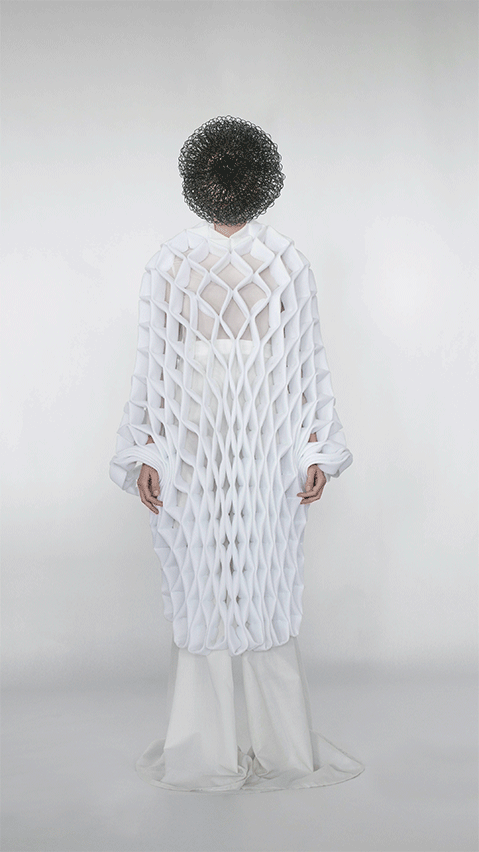
Transforming Sculptures by Ursula Vogl
Student Ursula Vogl created a versatile garment made up of concertina-like fabric that can be manipulated to be worn in a variety of ways.
Transforming takes cues from the behaviour of unicellular organisms to create a textile structure that's shape can be swiftly changed.
"Biomechanical principles and growth process of unicellular organisms, such as radiolarians and slime moulds, inspire the constantly changing textile structures of Transforming," said Vogl. "Reversible transformation, transformative reversal."
Student: Ursula Vogl
School: University of Art and Design Linz
Course: Transforming Sculptures
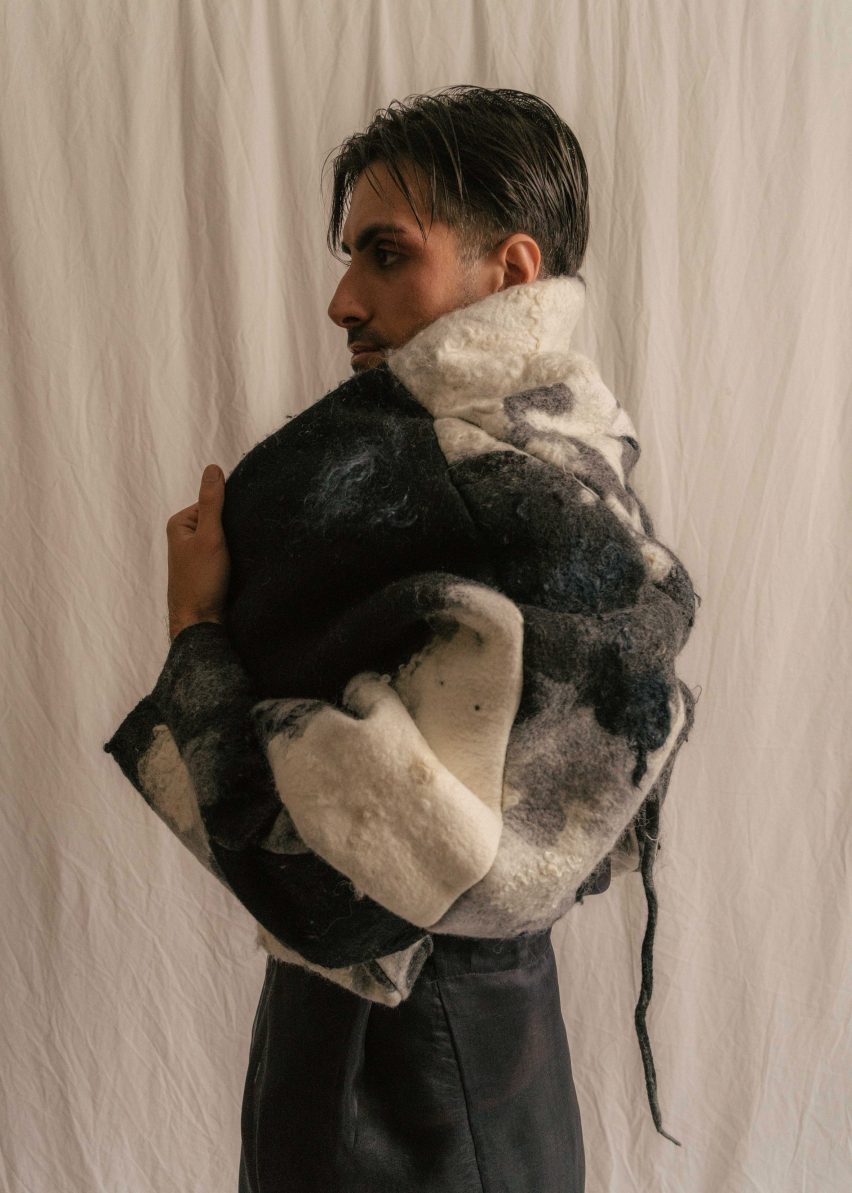
Maddison Robinson applied the thought experiment Ship of Theseus to garments, questioning if clothes that have been reconstructed or repaired over time are still regarded as the same garment they originally were.
The pieces were made from natural materials in neutral colourways and celebrate traditional hand-crafted production methods
"[My] methodology is heavily material and process-focused," said Robinson. "[I] strive to create garments that celebrate the complexions of natural materials and appreciate slow and hand-crafted techniques."
"Sustainability is a fundamental factor in how garments are designed, with a motivation to be more thoughtful and intentional in what is crafted."
"The focus on bespoke and considered re-design of pre-existing garments and materials are at the centre."
Student: Maddison Robinson
School: Design Institute of Australia
Course: Bachelor of Fashion Design (Honours), Fashion Apparel Design at University of Technology Sydney

Disbanded by Franziska Ostermeier
Textiles student Franziska Ostermeier created a series of garments made from lengths of textiles intended to look like oversized woven threads.
The project aims to demonstrate how overconsumption of fabrics and clothing has led to a disconnect with the origins of textiles and their materiality.
"Disbanded encourages viewers to consider these different dimensions of textiles," said Ostermeier. "In a series of deconstructed clothing items, layers are removed, threads exposed and microscopically small fragments are blown-up to exaggerated proportions."
"This creates visual associations with the origin of the word textile, which comes from the Latin word 'texere', meaning to weave, braid, assemble and build," she continued.
Student: Franziska Ostermeier
School: Lucerne School of Art and Design
Course: BA Textile Design
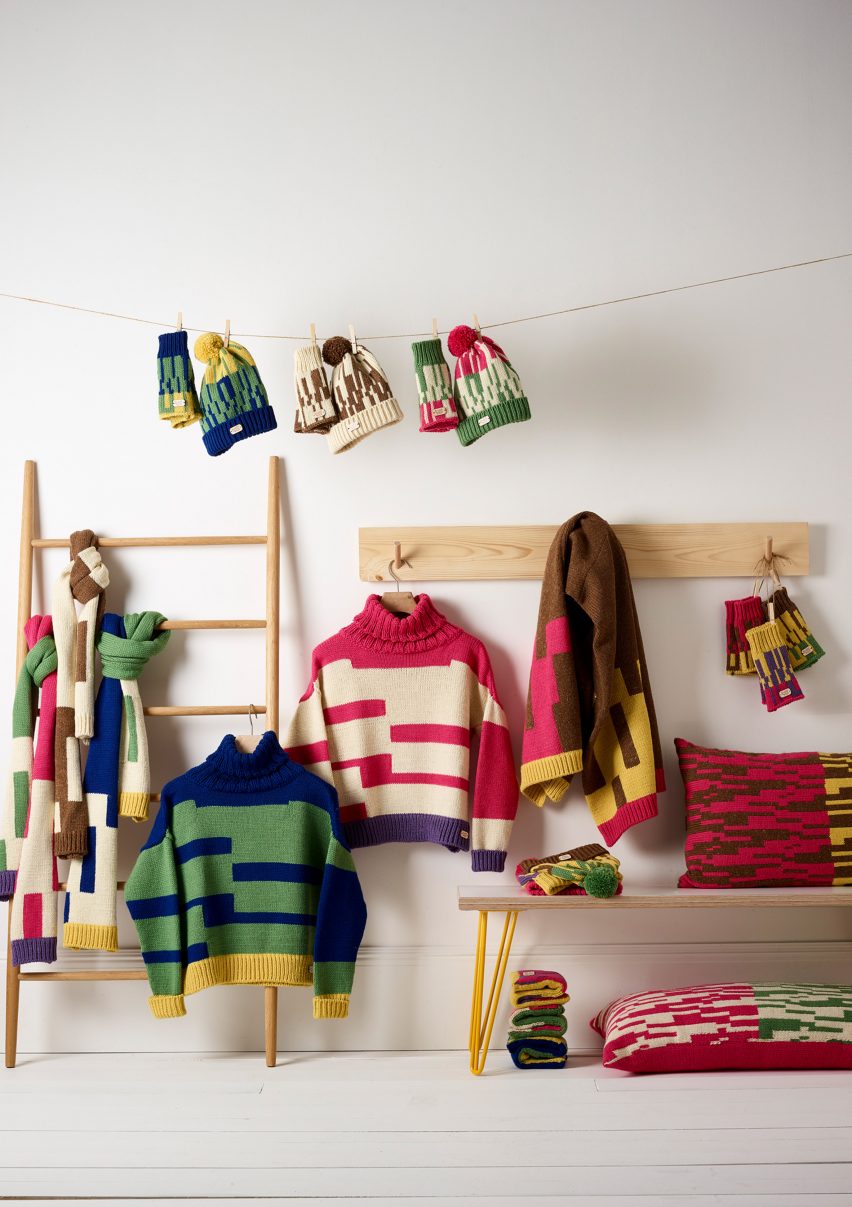
Alongside her masters studies, Katie Allen is a shepherd and artisan who created a collection of knitwear comprising clothing and accessories made from the wool from her own flock of sheep.
The material is 100 per cent traceable, ensuring that the sheep are properly cared for and that the land they graze is treated responsibly, as well as placing the emphasis on slow hand-made manufacturing processes.
"[My] hand-crafted knitwear demonstrates how British wool can be grown regeneratively, simply and locally processed, resulting in clothing that is beautiful, honest, and good for the earth," said Allen.
"[My] compassion for the sheep and the land they graze, combined with an innovative commitment to regional, low-carbon processing enables her to work sustainability all along the supply chain, creating an important connection between people, place and product."
Student: Katie Allen
School: Bath Spa University
Course: MA (Design) Textiles
Partnership content
These projects are presented in school shows from institutions that partner with Dezeen. Find out more about Dezeen partnership content here.